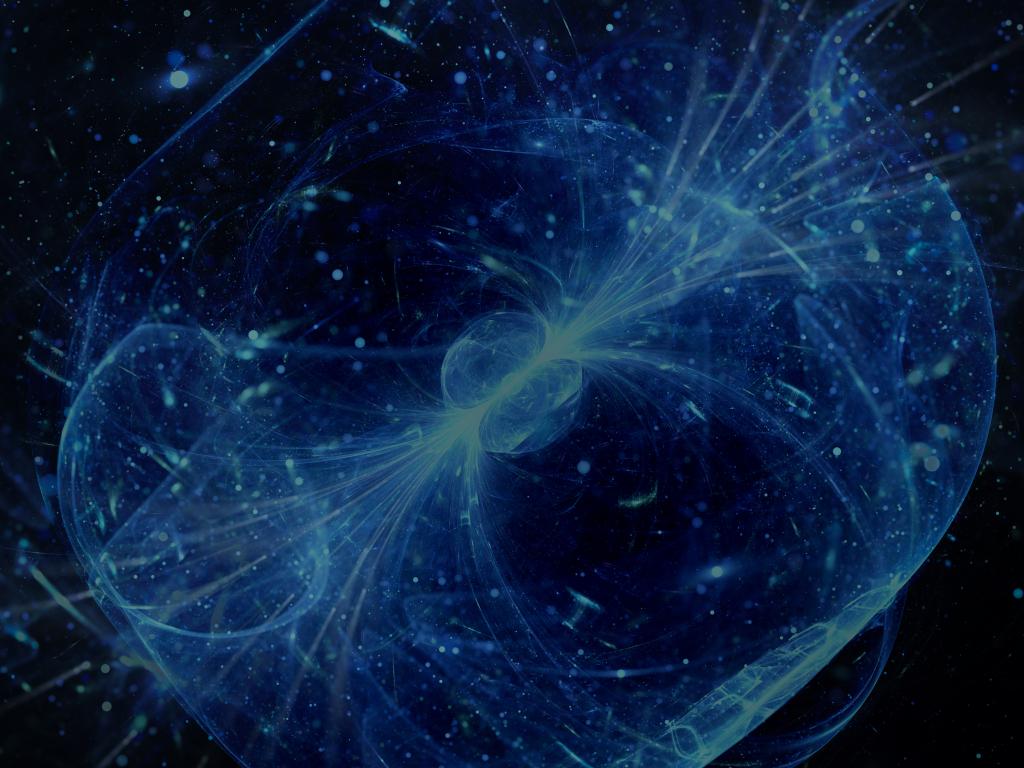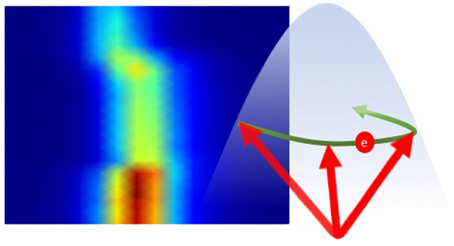Admission CTAs
Mason, NIST, ANL and ORNL collaboration discovers a new topological magnetic state
Summary: In a paper published in the journal Science Advances George Mason University Assistant Professor Nirmal Ghimire leads a group of materials science experts from Mason, NIST, ANL, and ORNL to discover a quantum phenomenon that has the potential to become a building block of future electronic technology emerges at high temperatures from a mechanism not before realized.
In order to find new ways to incorporate magnetic spins in the electronic devices for data storage and information processing, scientists have begun to explore new forms of spin arrangements called spin texture in materials that can respond to external stimuli such as magnetic field. One of such phenomena is a topological Hall effect, where an electric charge flowing through a special spin texture is subjected to a deflecting force more than when it flows through a conventional magnet.
A George Mason University team heads a collaboration with scientists from the National Institute of Standards and Technology (NIST), Argonne National Laboratory (ANL), and Oak Ridge National Laboratory (ORNL) that has identified a novel way in which increasing temperatures play a key role in forming a magnetic texture that generates the topological Hall Effect (THE). This materials science discovery should prove particularly valuable by opening a new avenue to the materials space potential for future spin based electronic devices.
“Arguably a primary topic in current materials physics research, it was believed that only a few special crystal structures and only special magnetic configurations would allow the topological Hall Effect to emerge in a material,” shared primary investigator, Nirmal Ghimire assistant professor of physics at George Mason University.
To understand the origin of this behavior, researchers first ruled out the usual explanation, by mapping out the magnetic phases stabilized by external magnetic field.
“The neutron science at the NIST Center for Neuron Research helped make this important discovery possible,” said Jeffrey Lynn, NIST Fellow. “The team employed detailed transport, magnetization, neutron scattering, and in-depth theoretical analysis to identify an intriguing magnetic structure as the origin of the THE, where the temperature-induced magnetic fluctuations play the critical role.” Lynn added.
Argonne Senior Scientist John Mitchell added, “What makes this material so special and interesting is the appearance of the THE at high temperature. This was completely opposite to our normal expectations and called for this radically new mechanism.”
“Mason researchers are known to productively foster collaborations that make significant breakthroughs in their scientific domains,” said Fernando Miralles-Wilhelm, Mason College of Science dean. Our valued partnerships with NIST and the national laboratories across the country are critical components that fuel our scientific innovation.”
“Our work is remarkable not only in terms of its discovery, but also as an exceptionally synergetic collaborative effort unifying all aspects of new materials research: sample fabrication and characterization, transport and magnetic measurements, neutron scattering, and both computational and analytical theory,” said Igor Mazin, the theory lead, who is also a Mason physics professor. “Intensive exchange of information and constant feedback of results and ideas between the investigators on a level higher than typical for such collaborations led to this impressive success,” Mazin added.
In addition to Mason physics faculty and scientists at NIST, ANL and ORNL, the team also included Mason undergraduate student, Dina Michel and graduate students, David Connor Jones and Nishchal Thapa Magar, and a postdoc at NIST, Rebecca L. Dally.
A paper based on the study "Competing magnetic phases and fluctuation-driven scalar spin chirality in the kagome metal YMn6Sn6" appeared in the December 18 issue of Science Advances. Other co-authors include L. Poudel, and M. Bleuel of NIST and University of Maryland, J. S. Jiang, and John F. Mitchell of ANL, and Michael A. McGuire of ORNL.
The research is funded by U.S. Department of Energy, Office of Science, Basic Energy Sciences, Materials Science and Engineering Division. Nirmal Ghimire and Igor Mazin are supported by start-up funds from George Mason University. The neutron facilities at the National Institute of Standards and Technology are funded by the U.S. Department of Commerce.


